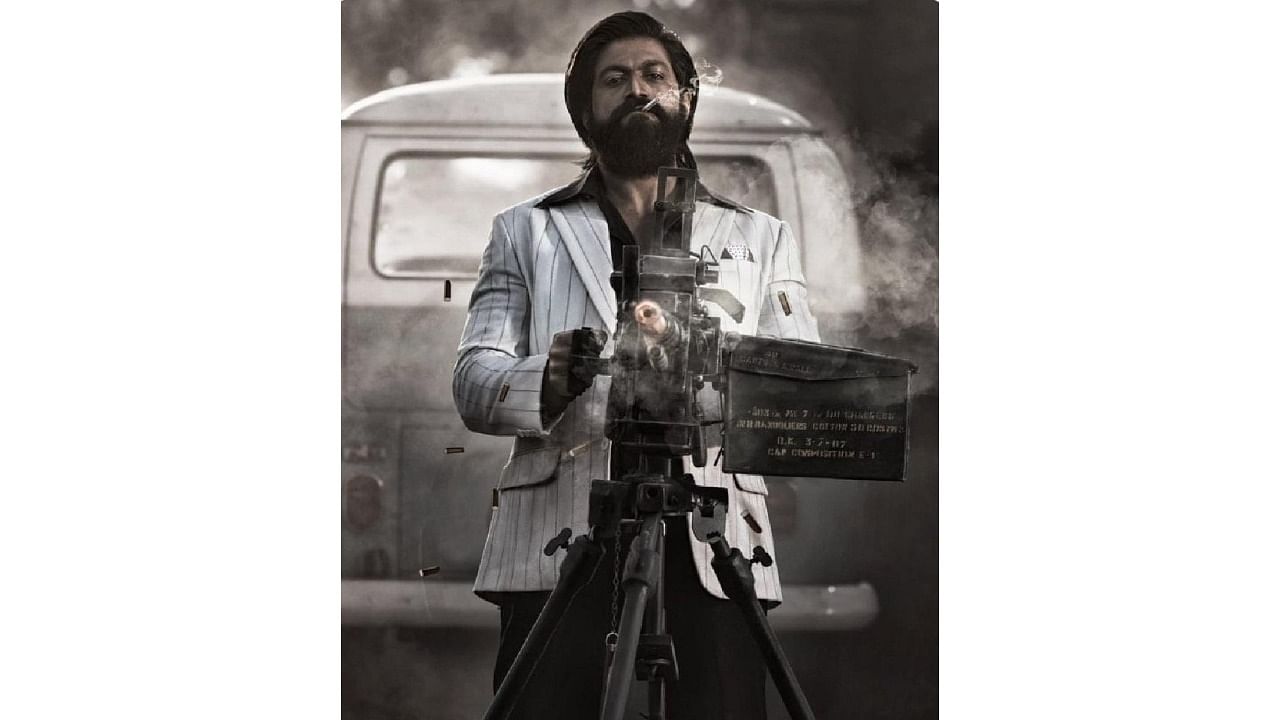
SS Rajamouli’s ‘RRR’ has a jaw-dropping 15-minute pre-interval sequence involving animals. The big surprise and the high-voltage action choreography that follows it are sure to leave you enamoured by the sheer audacity of the idea.
Three weeks later came a film that overshadowed the massive buzz around ‘RRR’. ‘KGF: Chapter 2’, directed by Prashanth Neel, has actor Yash blowing up a police station with a machine gun called ‘Doddamma’. The five-minute scene is a delirious experience. Though the protagonist is committing an illegal activity, the scene fits well in the film’s universe as the hero is a criminal.
The masala film genre, perhaps the oldest in cinema, is thriving, and how! The pandemic and the OTT boom had challenged stardom but films such as the Allu Arjun-starrer ‘Pushpa’, ‘RRR’ with NTR Jr and Ram Charan and ‘KGF: Chapter 2’, have proven there is an unshakeable following for the genre.
“I think it’s all about choosing the right ingredients and placing them in the right places,” says senior film critic S Shivakumar. This perhaps is the golden rule of making a masala film. These films unabashedly worship their protagonists. There is a reason for it. “People live their fantasies through the larger-than-life characters. For instance, in ‘KGF: Chapter 2’, the protagonist flies to Dubai and gets tons of Kalashnikov rifles and he later storms into the Parliament to shoot a politician. Here is a man who rose from poverty and is living a life of luxury. Even if it is for a short while, people want to live a life of big fortunes,” he explains.
Be it in the ‘KGF’ or ‘Baahubali’ franchises, the hero is invincible but he has a purpose for his actions. “In masala films, the hero does objectionable things but he is a Robin Hood who has an explanation for his decisions, however wrong they may be. Mani Ratnam’s ‘Nayakan’ is a classic example,” notes Shivakumar.
Movie buffs from generations have loved heroes who suffer a fall before conquering their foes. “Films of Rajinikanth and Amitabh Bachchan show them having everything and then losing it. It’s their comeback that people find fascinating. They identify with the topsy-turvy graph of the hero,” he points out.
There must be an emotional reason behind a hero’s machismo, says Tharun Sudhir, the director of ‘Roberrt’, one of the highest-grossing films of Sandalwood last year. “It’s the mindless violence that people detest,” he says.
The mundane approach to masala films has no takers. The template of five songs and as many fights in films shows the creative dearth in the script. Well-made masala films are defined by technical superiority and out-of-the-box imagination. Filmmakers from the south (SS Rajamouli, S Shankar and Prashanth Neel) know the formula better than creators from Bollywood. They have crafted path-breaking films in which the money has gone into the making unlike Hindi films, which lose most of their budget to their stars.
It’s all about complete commitment to the craft even if you stick to formula, insists Tharun. "The ‘Oo Antava’ song from ‘Pushpa’ is a special number (item number). It has existed for ages in commercial cinema. But it went viral because of the work gone into the lyrics, music and dance choreography. People’s sensibilities have changed and directors need to push themselves to bring freshness to generic ideas,” he says.
In the OTT era, many love to watch films between the four walls of their house. But the full-fledged potential of a masala film is experienced on the big screen. Those who felt underwhelmed watching ‘KGF: Chapter 1’ had a positive opinion of the second installment when they caught it in theatres with a massive crowd. “Be it the camera angles or the DTS sound system, everything is planned keeping the big screen in mind. You lose the essence of such films when you watch them at home,” says Tharun.
The victory of such films has revived the pandemic-hit industry, to an extent. But blindly imitating the model will kill the golden goose, argues Tharun. “Movies such as ‘Puli’ (2015) and ‘Mohenjo Daro’ (2016) had the ‘Baahubali’ hangover but they didn’t work. The ‘KGF’ films worked because they matched the scale of ‘Baahubali’ but didn’t get influenced by its content,” points out Tharun.
‘Such films could trigger violence’
A set of audiences complain about the excessive violence in masala films. The stereotypical portrayal of women in commercial cinema has often come under sharp criticism from critics and rightly so.
Action and violence are inevitable aspects of the genre and hence the films carry an A certificate. One needs to tune his or her mind to traits of the genre to watch it with an open mind. Such films could trigger violence, say psychologists.
“If we are exposed to something too long, we find it to be true. So such films can lead to violent behaviour. They decrease positive traits like pro-social behaviour in people. People may become desensitised to violence,” says Afifa Kauser, a counselling psychologist.